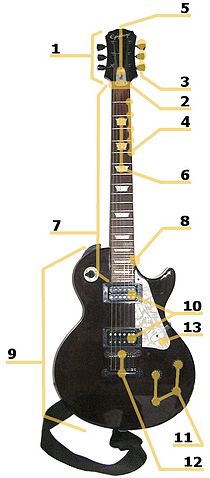General
Guitars can be constructed to meet the demands of both left and right-handed players. Traditionally the dominant hand is assigned the task of plucking or strumming the strings. For the majority of people this entails using the right hand. This is because musical expression (dynamics, tonal expression and colour etc) is largely determined by the plucking hand, while the fretting hand is assigned the lesser mechanical task of depressing and gripping the strings. This is similar to the convention of the
violin family of
instruments where the right hand controls the bow. A minority, however, believe that left-handed people should learn to play guitars strung in the manner used by right-handed people, simply to standardise the instrument.






0 komentar:
Post a Comment